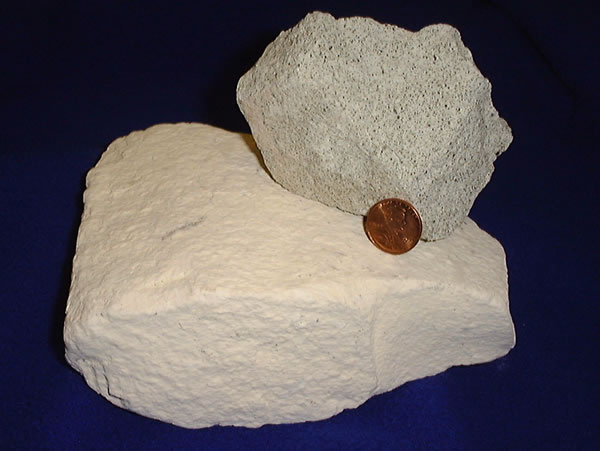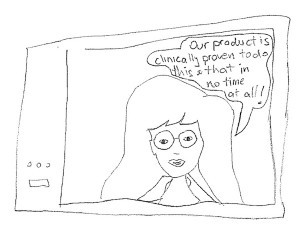Zeolites are naturally occurring or synthetic crystalline aluminosilicates. The pore network of a typical zeolite, which is confined by the framework, consists of cavities and connecting windows of uniform size1. Zeolites occur naturally but are also produced industrially on a large scale. As of today, 229 unique zeolite frameworks have been identified, and over 40 naturally occurring zeolite frameworks are known. Zeolites have been widely employed in chemical and food industries, agriculture, and environmental technologies as adsorbents, absorbents, adsorbent filter-aids, ion-exchangers, catalysts, soil improvers, etc2. In this article we will explore the use of zeolites as active cosmetic and pharmaceutical ingredients. The fact that zeolites can protect polymers from ultraviolet degradation opens a wide spectrum for external application of zeolites in cosmetics and dermatology3. Oral intake has also shown to have an effect on skin.
Common topical applications
External use of zeolite powder has been shown to be effective in the treatment of athlete’s foot and in reducing the healing time of wounds and surgical incisions. Double blind clinical studies have found that tissue conditioners containing silver-exchanging zeolites have a strong antimicrobial effect. In Japan there is currently a drug based on zeolite used as an antimicrobial agent for dental treatments. Anecdotal evidence suggests that the cuts of mill and mine workers exposed to on-the-job zeolite dust heal extremely quickly. There are some reports that tribomechanically micronized clinoptilolite helps healing of certain ulcers, and has some benefits in the treatment of psoriasis. In some countries, it is a common practice to dust the cuts of horses and cows with clinoptilolite to hasten the healing process3.
Zeolite in deodorants
Zeolites efficacy has been proven with regards to deodorants for axillary osmidrosis. Axillary osmidrosis is caused by excessive secretion of apocrine, which causes an acrid odour and extreme social embarrassment. Conventional underarm deodorants suppress the process of odour production mostly by the following mechanism: (1) suppression of perspiration, (2) reduction in numbers of resident bacteria, (3) deodorization and (4) masking. The most important and effective method to reduce odour is to suppress the growth of resident bacteria with antimicrobial agents4 (mechanism number 2). However, this method has several drawbacks, including the potential to cause irritant and allergic reactions7. To overcome this problem a type of zeolite called silver-exchanged zeolite has been proved to pose less safety risks, while its bactericidal effect on skin-resident bacteria was found to be excellent. A total of 39 volunteers were enrolled in the initial dose-response study of silver-exchanged zeolite powder spray, which revealed that 5-40 w/w% silver-exchanged zeolite could show a sufficient antimicrobial effect against skin-resident bacteria. Subsequently, the efficacy of silver-exchanged zeolite was tested against triclosan, one of the most frequently used organic antimicrobial in deodorants. A comparison study using 0.2 w/w% triclosan as the control and 10 w/w% silver-exchanged zeolite indicated that: (1) one application of the powder spray containing 10 w/w% zeolite could show a sufficient antimicrobial effect against the resident bacteria and its effect continued for 24 h; (2) a powder spray containing 0.2 w/w% triclosan was unable to show a sufficient antimicrobial effect, and (3) no adverse event was observed. These studies show that silver-exchanged zeolite has a superior antimicrobial ability that is rarely found in conventional antimicrobials used in deodorant products and a strong antiaxillary odour deodorant ability because of its long-lasting effect. Patch tests with humans and other clinical studies of this product showed no adverse events related to the treatment with the silver-exchanged zeolite product4.
Zeolite and sun protection
Zeolite has also been studied with regards to the development of a new mineral-based sun lotion designed to protect the skin from the negative effects caused by exposure to UV light. Results obtained in a study5 published in 2014, showed that zeolite minerals were capable of absorbing the highest level of UV light compared to that of the control cream. It was also shown that zeolite minerals have UV absorption as much as other conventional sunscreens which are commercially available in the market. The study demonstrated the UV absorption properties of zeolite, and its use in sunscreen lotions. The study also recommended further research in order to determine whether any combination with other materials could enhance the UV absorption features of zeolite5.
Oral intake of orthosilicic acid
Chronic exposure of the skin to sunlight causes damage to the underlying connective tissue with a loss of elasticity and firmness. Silicon has been suggested to have an important function in the formation and maintenance of connective tissue. Although zeolites are characterized by substantial water insolubility, when they are in contact with water and physiological fluids they release small, but significant, equilibrium concentration of orthosilicic acid (H4SiO4)2. The effect of oral intake of this acid on skin, nails and hair in women with photodamaged skin was investigated in 2005 in a randomized, double blind, placebo-controlled study6. Fifty women with photodamaged facial skin were divided into 2 groups and administered a daily oral dose of either 10 mg silicon in the form of orthosilicic acid or a placebo for 20 weeks. The study involved multiple non-invasive assessment methods. Micro relief and skin hydration evaluation were performed on the forearm. Mechanical anisotropy, measured as change in longitudinal and lateral shear propagation time, was performed on the forehead. Volunteers self-assessed brittleness of hair and nails on a virtual analogue scale (VAS, none=0, severe=1). The serum Si concentration was significantly higher after a 20-week supplementation in subjects with orthosilicic acid compared to the placebo group. Skin roughness parameters increased in the placebo group but decreased in the treatment group. The difference in longitudinal and lateral shear propagation time increased after 20 weeks in the placebo group but decreased in the treatment group suggesting improvement in isotropy of the skin. VAS scores for nail and hair brittleness were significantly lower after 20 weeks in the treatment group compared to baseline scores. Oral intake of the treatment during the 20 weeks was therefore found to have a significant positive effect on skin surface and skin mechanical properties, and on brittleness of hair and nails6.
There are currently several cosmetic and dermatological products containing zeolite sold in Australia, which claim to have several beneficial effects on skin health. Based on the research that has already been conducted over the years, zeolite has proven to have great potential in a number of different areas. It would be interesting to look further into zeolite efficacy to see if it can benefit our skin in other ways as well.
- Marijeta Kralj and Kresimir Pavelic; Medicine on a small scale; EMBO Rep. 2003 Nov; 4(11): 1008–1012.
- Lela Munjas Jurkić, Ivica Cepanec, Sandra Kraljević PavelićEmail author and Krešimir Pavelić; Biological and therapeutic effects of ortho-silicic acid and some ortho-silicic acid-releasing compounds: New perspectives for therapy; Nutr Metab (Lond) 2013 8;10(1).
- Pavelic K, Hadzija M, Edited by: Auerbach SM, Carrado KA, Dutta PK; Medical applications of zeolites. Handbook of zeolite science and technology; 2003, New York: Marcel Dekker, 1143-1174. 1st.
- T Nakane, H Gomyo, I Sasaki, Y Kimoto, N Hanzawa, Y Teshima, T Namba; New antiaxillary odour deodorant made with antimicrobial Ag-zeolite (silver-exchanged zeolite); Int J Cosmet Sci 2006 Aug;28(4):299-309.
- M M Movahedi, A Alipour, S A R Mortazavi, and M Tayebi; Production of a Novel Mineral-based Sun Lotion for Protecting the Skin from Biohazards of Electromagnetic Radiation in the UV Region; J Biomed Phys Eng. 2014 Mar; 4(1): 9–12
- Barel, A.; Calomme, M.; Timchenko, A.; De Paepe, K.; Demeester, N.; Rogiers, V.; Clarys, P.; Berghe, D. Vanden; Effect of oral intake of choline-stabilized orthosilicic acid on skin, nails and hair in women with photodamaged skin; Archives of Dermatological Research;Oct2005, Vol. 297 Issue 4, p147.
- Matthew J. Zirwas, MD and Jessica Moennich, MD; Antiperspirant and Deodorant Allergy; Clin Aesthet Dermatol. 2008 Sep; 1(3): 38–43.



